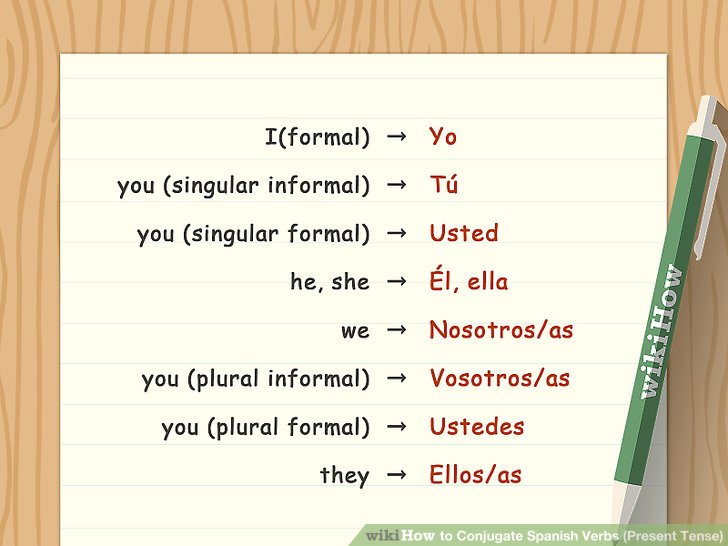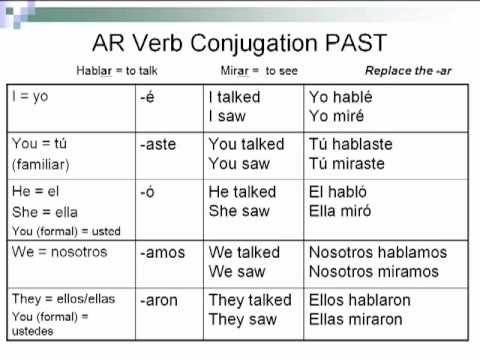Click to see all conjugation charts of iniciar in every tense
In this conjugation lesson we will learn how to conjugate the verb iniciar in the Presente tense of the Indicativo mood. It means we will see step by step how to create and translate forms of each grammatical person.
This lesson is specifically about the iniciar conjugation. For a general overview of Simple Tenses conjugation see our Simple Tenses Conjugation Chart.
You may also see the Video Presentation on how to conjugate verbs in Presente. It’s embedded below, but using the above link you will get more detailed information on conjugation in this tense as well as explanation of special cases and exceptions.
How to translate Presente to English
Note that the English phrases provided below next to each conjugation are not direct translations from Spanish to English. They are usually the closest general equivalents. The example differences are:- In Spanish conjugation, there is the form usted in the third person singular. But this person does not translate to the English third person singular. It translates to the so called formal you and uses the inflected form which is most often represented as he/she/it in English conjugation charts.
- Similar situation happens in the third person plural, where ustedes translates to the English plural formal you but uses the form which corresponds to the they form in English.
- Tenses are used differently in Spanish and English, so the actual translation should always take into account the context and focus on translating the meaning, not just words.
- In both languages each verb may have multiple meanings and not every meaning translates directly to the other language. Here also, the context and focusing on the particular meaning helps to create the most accurate translation.
The Spanish Presente de Indicativo tense translates to one of the following:
- The English Present tense, for example: ellas inician(feminine) they initiate
- The English Present Progressive (also called Present Continuous) tense, for instance:en este momento nosotras iniciamos(feminine) we are initiating at the moment
Note that the Spanish equivalent of the Present Progressive also exists and is in common use – that’s Presente Progresivo (or Presente Continuo).
Note the timeline
The ability to accurately locate the intended position on the timeline is a crucial skill for proper choice of tenses. So pay attention to the timeline in our lessons and visualize it while speaking, listening, writing and reading. After a bit practice you will be able to select the right tense to use much easier.
Step by step instructions
Presente belongs to the simple tenses group, which means that all of the conjugated forms are one word long. There are also compound (compuesto) tenses in the Spanish language, where each inflected form consists of two words.The verb iniciar has regular conjugation in the Presente tense of the Indicativo mood. It means this verb just follows the basic rules for its group (-ar) without spelling corrections or exceptions. The basis for this conjugation is the stem of the verb, so we have to begin by splitting the infinitive into a stem and an ending. It’s really easy to do. Just remove two letters from the end of the infinitive and you have the ending — one of -ar, -er or -ir. What’s left is the stem. So in case of our verb:- the stem is: inici-
- and the ending is: -ar
- yo inicio – I initiate
- tú inicias – you initiate
- él inicia – he initiates
- ella inicia – she initiates
- usted inicia – (formal) you initiate
- nosotros iniciamos – we initiate
- nosotras iniciamos – (feminine) we initiate
- vosotros iniciáis – (plural) you initiate
- vosotras iniciáis – (feminine, plural) you initiate
- ellos inician – they initiate
- ellas inician – (feminine) they initiate
- ustedes inician – (formal, plural) you initiate
That’s it! The conjugation is now done. The final result looks as follows:
| yo | inicio | I initiate |
| tú | inicias | you initiate |
| él/ella/usted | inicia | he/she/it initiates |
| nosotros/nosotras | iniciamos | we initiate |
| vosotros/vosotras | iniciáis | you initiate |
| ellos/ellas/ustedes | inician | they initiate |
But do not end your session yet – it’s important to repeat and practice the material in order to retain it. Check below for example phrases and some links.
Example sentences
Cuando inicia la primavera, a María le encanta ir a acampar con su familia en el bosque.
When spring comes, Maria loves to go camping with her family in the wood.
Next Steps to Perfection
|
Report a mistake | Give feedback
Thank you very much for making the effort to contact us!
We strive to provide the highest quality content and we greatly appreciate even the smallest suggestions:
We strive to provide the highest quality content and we greatly appreciate even the smallest suggestions:



